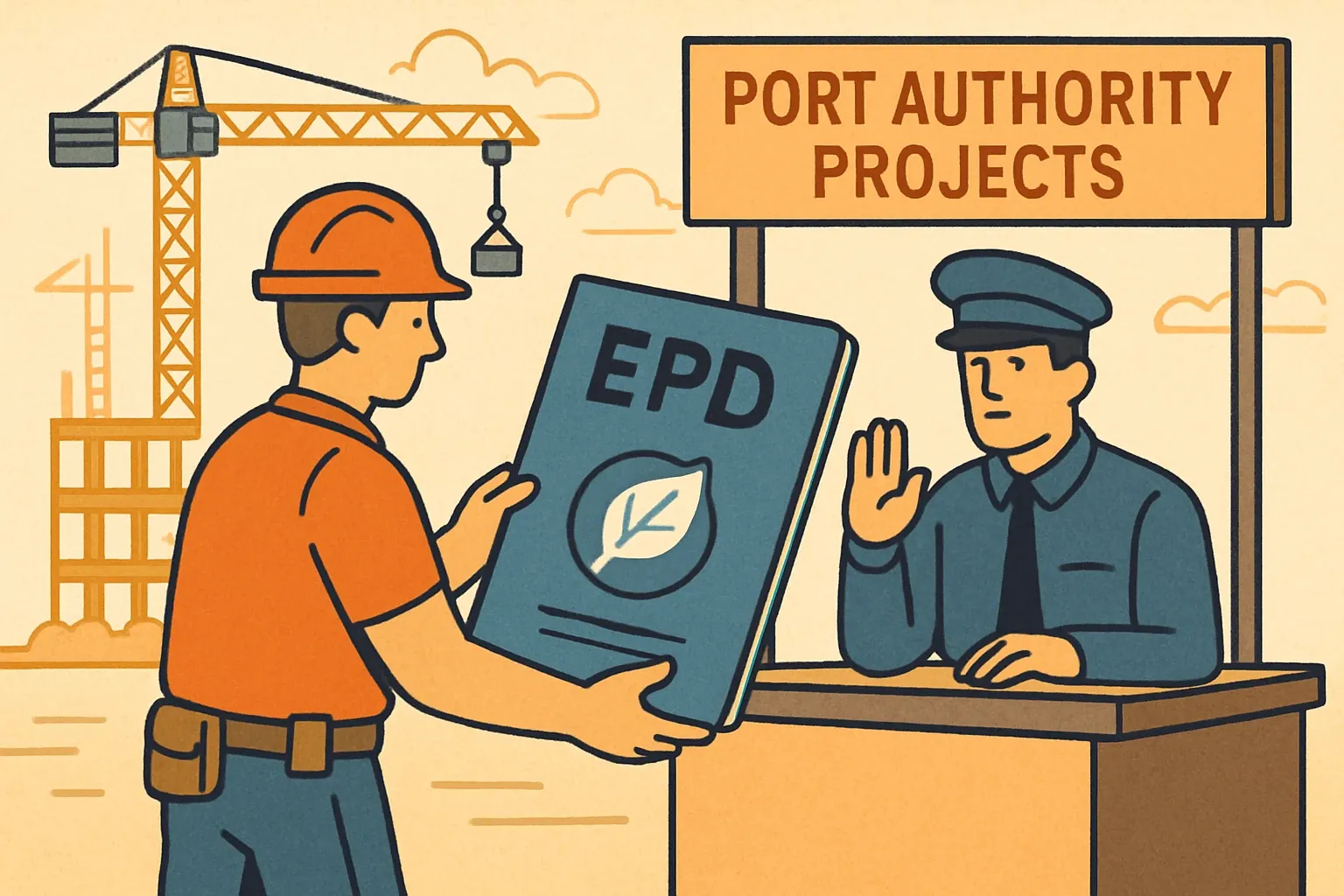PANYNJ Clean Construction Program Demands EPDs
Trying to sell concrete, steel, or asphalt into Port Authority projects without an Environmental Product Declaration now feels like arriving at JFK with an expired passport. PANYNJ’s Clean Construction Program quietly flipped the switch: no verified impact data, no ticket to bid. Painful? Yes. Surmountable? Absolutely—if you get your LCA house in order.


Why the Port Authority Moved First
The agency controls more than USD 3.6 billion in capital spending for 2025 alone, from terminal rebuilds to tunnel overhauls (PANYNJ budget, 2025). Every extra kilogram of embodied carbon in those materials would echo across decades of operations. Leadership chose to act early, setting a regional tone that other public owners now track like radar.
EPDs: Your Entry Ticket to Billions
The 2020 launch announcement made it plain: contractors must file an Environmental Product Declaration for each major material so Port Authority engineers can compare mixes side by side (Aviation Pros, 2020). No EPD, no purchase order. For manufacturers, that flips the usual sales funnel—spec writers open your data sheet before they open your brochure.
Concrete Limits and the Race to 37 Percent
Revised specifications published in 2023 cap global warming potential by strength class and allow ground glass or Portland limestone cement. Pilot mixes have already cut emissions up to 37 percent over prior baselines (Mass Transit, 2023). The numbers is clear: if your mix still leans on high-clinker content, it risks instant disqualification.
Waste, Equipment, Data: A Full Circle Scope
EPDs sit inside a bigger umbrella. The program demands 75 percent diversion of concrete, asphalt, and steel scrap, plus Tier 4 diesel equipment on site (PANYNJ, 2020). Material suppliers that collect robust plant data make downstream reporting painless for the GC—and win favor in tight bid windows.
How Manufacturers Can Move Fast
- Pick the common PCR your competitors already cite; speed beats novelty.
- Centralize utility and ingredient data now, not when the RFQ lands.
- Choose an LCA partner who shoulders the spreadsheet grunt work, freeing plant engineers for line uptime. Delay here means watching rivals land multi-year contracts while your spec sits on the bench.
Key Takeaways for Product Teams
PANYNJ’s rules are not a one-off; state buy-clean mandates echo them across the Northeast. An audited EPD turns from marketing nice-to-have into a compliance must-have overnight. Get the paperwork right, and you board the flight; miss it, and you stay stranded at the gate.
Frequently Asked Questions
Does the Clean Construction Program require EPDs for materials beyond concrete?
Yes. While concrete grabs headlines, the 2020 framework lists asphalt, steel, and even site equipment as in-scope for disclosure (PANYNJ, 2020).
What global warming potential limits apply to concrete mixes today?
June 2023 specs set strength-based GWP ceilings and accept blends that achieve up to a 37 % cut versus legacy mixes (Mass Transit, 2023).
Do I need a project-specific EPD or will a facility-wide one do?
Facility-wide EPDs are accepted if they match the mix design; project-specific versions score bonus points when bids are closely ranked, according to Port Authority procurement guidance.
Is there still time to comply for bids in 2026 and beyond?
Yes, but data gathering can take months. Start compiling 2024-2025 production data now so an LCA practitioner can deliver a verified EPD well before tender deadlines.
Will these rules influence private developers?
Most likely. Major airports and transit hubs anchor regional supply chains; once suppliers shift to low-carbon, private jobs often mirror the same specifications within a season.
